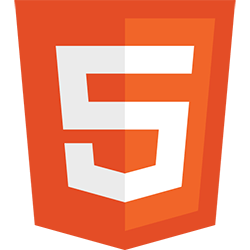Implement jQuery-like “Click” Syntax In MooTools 1.2
I've updated this post's content per reader comments. Thanks to everyone for their suggestions!
While I prefer the MooTools syntax over the jQuery syntax, I do respect the jQuery syntax. Here's a quick way to make your MooTools look a little like jQuery by implementing the Element.click() function.
The MooTools JavaScript
Element.implement({
'click': function(fn) {
return this.addEvent('click',fn);
}
});
The MooTools JavaScript Usage
window.addEvent('domready',function() {
//show an alert when the element is clicked.
$('click-me').click(function() {
alert('Clicked');
});
});
This syntax will allow for shorter code if you do a lot of click event programming.
![An Interview with Eric Meyer]()
Your early CSS books were instrumental in pushing my love for front end technologies. What was it about CSS that you fell in love with and drove you to write about it?
At first blush, it was the simplicity of it as compared to the table-and-spacer...
![Page Visibility API]()
One event that's always been lacking within the document is a signal for when the user is looking at a given tab, or another tab. When does the user switch off our site to look at something else? When do they come back?
![HTML5’s window.postMessage API]()
One of the little known HTML5 APIs is the window.postMessage API. window.postMessage allows for sending data messages between two windows/frames across domains. Essentially window.postMessage acts as cross-domain AJAX without the server shims. Let's take a look at how window.postMessage works and how you...
![Using MooTools For Opacity]()
Although it's possible to achieve opacity using CSS, the hacks involved aren't pretty. If you're using the MooTools JavaScript library, opacity is as easy as using an element's "set" method. The following MooTools snippet takes every image with the "opacity" class and sets...





Hey, Just wanted to say thanks for your blog, its really helped me along with Mootools, and I enjoy working and creating things with ease.
I just need to know thou,
Should I be switching over to JQuery.
with Microsoft’s decision to incorporate JQuery, I’m wondering if I’m using the wrong framework.
I read the article at juliocapote.com
and well I just need a Yes or a No.
I trust your judgment.
and
Iis the future of Mootools sound?
Nice, but why not just pass the whole ‘fn’ to the ‘addEvent’ function? Eg:
Element.implement({ 'click': function(fn) { this.addEvent('click', fn); } });.. because some coders might probably do this:
$('click-me').click(function(e) { e.stop(); alert('Clicked'); });… and probably some don’t want to ‘stop’ the event by default.
@Lim Chee Aun: Great tip! I was trying to get something similar to work but couldn’t get it going. Thanks for sharing!
@david: No problem. I’m actually working (very slowly) on porting (almost) all jQuery-style syntax to Mootools. Not sure if it will be useful though.
Something I’ve thought of that might be a slight problem, though haven’t tested, is binding.
I could see someone trying to use this keyword, and might even remember to bind it in the click function, but when it gets used in the addEvent part, you didnt bind this.
Like I said, haven’t tested for actual failure, but in theory it sounds breakable :D
In my meager JavaScript dabblings, I’ve always been jealous of jQuery’s event syntax. Needless to say, I’m really happy to see this as an option.
I’m somewhat of a hobbyist, so I apologize in advance for any mistakes. I did a little playing around and it looks like it doesn’t break .bind(this). This, of course, is a trivial implementation and there’s a chance that I totally misused .bind()
If anyone’s curious, the link in my name goes to my uh … ultra-complex tests :P
Element.implement({ click: function(fn){ return this.addEvent('click',fn); } });@david
i think you should “return this”
after implementation
Element.implement({ ‘click’: function(fn) { this.addEvent(’click’, fn); return this } });